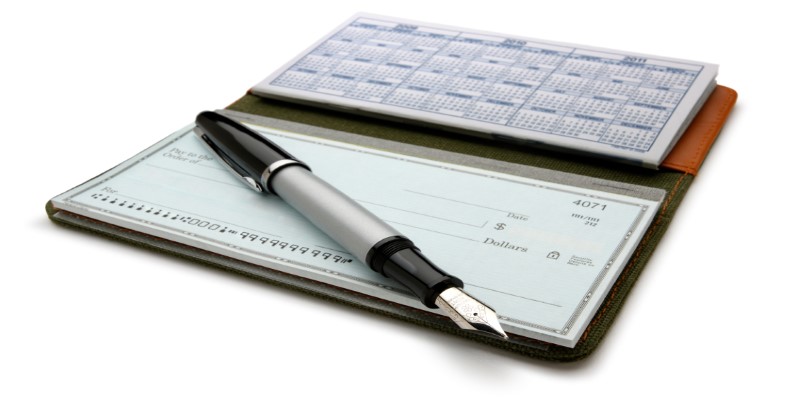Breaking Down Regional Check Processing Centers and Their Functions
In today's increasingly digital payment landscape, checks remain a cornerstone of business transactions, offering reliability and a tangible record of payment. Yet, many overlook the intricate journey a check takes to transform from a piece of paper into a validated payment credited to an account. At the heart of this transformation lies the **Regional Check Processing Center (RCPC)**. These centers serve as vital hubs within the banking ecosystem, ensuring the smooth processing, verification, and clearance of checks with remarkable speed and precision. But what exactly happens within these facilities, and why are they indispensable to the banking world? This article dives into the critical role of RCPCs, explores their inner workings, and highlights their continued relevance in a fast-evolving financial environment.

What Is a Regional Check Processing Center?
A Regional Check Processing Center, abbreviated as RCPC, is a central bank or other financial organization facility. It is meant to receive and clear checks on a regional basis. It is like the middleman in the clearing of checks, connecting banks from one region to another to make financial transactions smooth.
Historically, RCPCs were formed to rationalize the exchange of checks in a world dominated by physical checks with respect to financial transactions. Instead of banks forwarding their checks to the recipient banks, they send their checks to the RCPC. Here, checks from different banks within a region are collected, sorted, and processed so that they reach their respective destinations with minimal delays.
Though digital payment systems are increasingly dominating this field, some aspects give RCPCs a strong stake in bridging gaps between banks, especially in areas where checks continue to be frequently used.
How Does an RCPC Work?
The operations of an RCPC are both fascinating and highly organized, combining manual effort and advanced technology to ensure accuracy and speed in the check clearing process. Let’s break it down:

Check Collection and Sorting: When you deposit a check into your bank, it doesn’t immediately get credited to the recipient’s account. The deposited check is first sent to an RCPC along with others collected by the bank throughout the day. At the RCPC, these checks are sorted by the bank they need to go to, using automated systems for precision.
Data Capture and Verification: Once sorted, the critical information from each check—such as the account number, routing number, and amount—is captured using high-speed imaging and Optical Character Recognition (OCR) technology. This step ensures that all details are accurate before the check is cleared.
Interbank Communication: The RCPC acts as a mediator between banks. It communicates with the bank where the check originated (the payor’s bank) to confirm that sufficient funds are available. This step is crucial to avoid situations like bounced checks, which can lead to financial disputes.
Clearing and Settlement: After verification, the RCPC clears the check by confirming the transfer of funds from the payor’s bank to the recipient’s bank. This clearing process typically takes one to two business days but may be expedited with newer technology.
Delivery of Funds: Once the clearing is complete, the funds are deposited into the recipient’s account. At this stage, the check has officially been processed, and the transaction is finalized.
The Technology Behind RCPC Operations
Modern RCPCs leverage cutting-edge technology to handle millions of checks daily with remarkable efficiency. Imaging technology, as mentioned earlier, is a game-changer, enabling RCPCs to digitize checks and process them faster than ever before.
Additionally, many RCPCs have integrated electronic systems like the Check 21 Act in the United States, which allows banks to exchange digital copies of checks rather than physical paper versions. This innovation significantly reduces processing time, making the check clearing process more seamless and reliable.
Advanced software is also used to detect fraudulent checks, ensuring that only legitimate transactions are processed. These systems can identify anomalies, such as altered amounts or forged signatures, safeguarding both banks and customers from fraud.
Why RCPCs Still Matter in a Digital Era
Although digital payments are becoming the norm, Regional Check Processing Centers (RCPCs) remain a cornerstone of the financial system, particularly in regions where checks are still widely used. Checks continue to hold a unique appeal for many individuals and businesses, offering a tangible and traceable payment method that provides peace of mind for larger or recurring transactions. For these users, RCPCs serve as the backbone that ensures every check is processed smoothly and securely.

The importance of RCPCs becomes even more evident during peak financial periods, such as tax seasons or corporate payout cycles when the volume of checks skyrockets. These centers handle these surges efficiently, preventing delays that could disrupt businesses or individuals waiting for funds. Additionally, RCPCs play a stabilizing role by ensuring a consistent flow of funds between banks, which is critical to maintaining economic stability on a regional and national level.
Another key advantage of RCPCs lies in their ability to centralize check processing within specific regions. By acting as a hub, they relieve individual banks of the operational burden involved in sorting, verifying, and clearing checks. This allows banks to focus their resources on enhancing customer service and expanding their financial offerings.
Conclusion
The Regional Check Processing Center (RCPC) might not be a household term, but its impact on the banking system is undeniable. From collecting and sorting checks to verifying and clearing funds, RCPCs streamline the check clearing process, ensuring accuracy, speed, and security.
Even as digital payments rise in popularity, the RCPC continues to play a pivotal role, bridging gaps between traditional banking methods and modern innovations. For regions and businesses that still rely on checks, these centers are nothing short of indispensable, proving that some traditional systems can coexist with new-age technologies to keep the financial world running smoothly.











